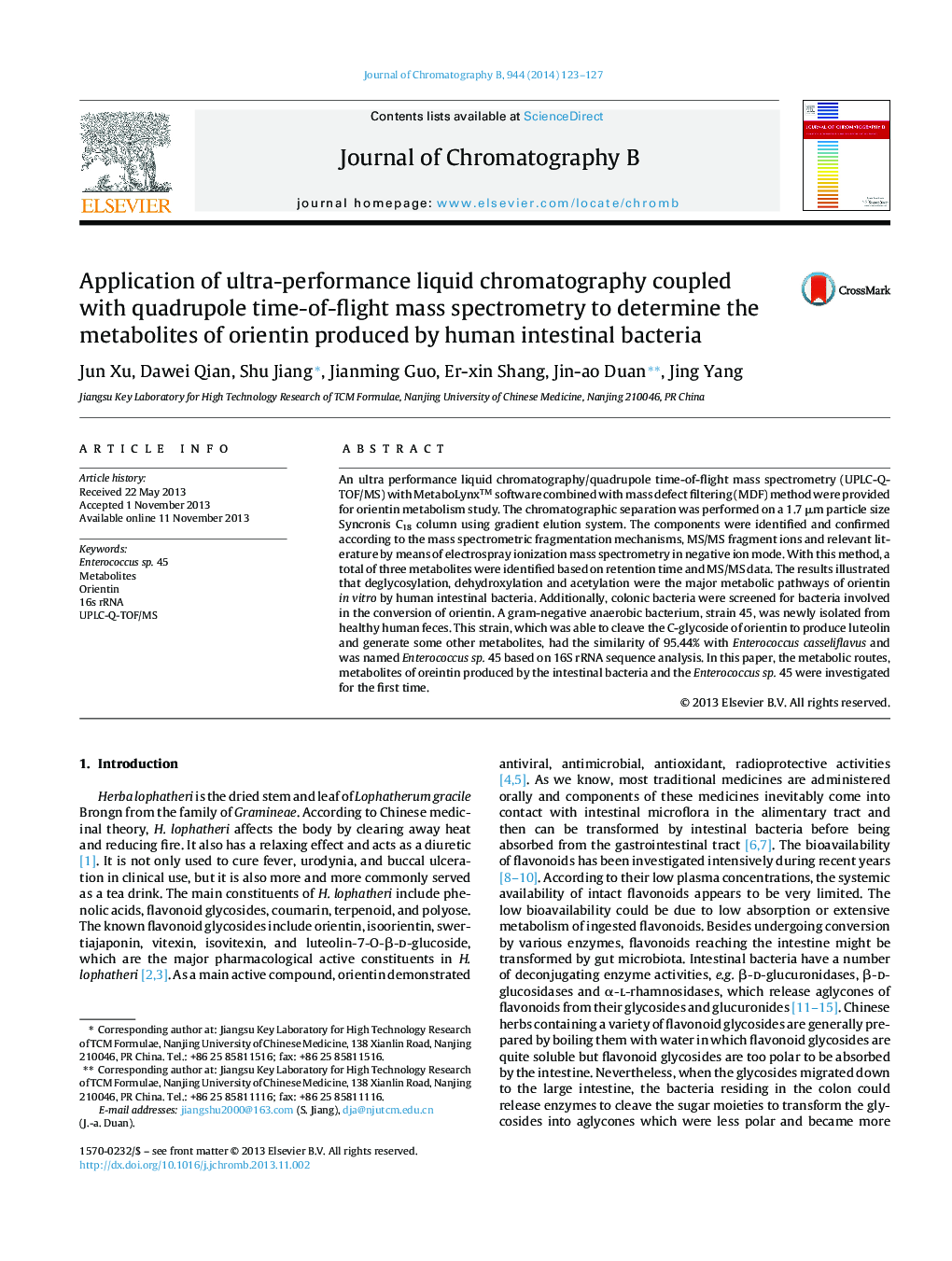| Article ID | Journal | Published Year | Pages | File Type |
|---|---|---|---|---|
| 1212747 | Journal of Chromatography B | 2014 | 5 Pages |
•Orientin is a major active ingredient of Herba lophatheri.•The metabolic pathway of orientin by human intestinal bacteria was investigated firstly.•UPLC-Q-TOF/MS was used for identifying the metabolites of orientin.•Sequencing the 16S rRNA gene of an orientin-converting bacterium.
An ultra performance liquid chromatography/quadrupole time-of-flight mass spectrometry (UPLC-Q-TOF/MS) with MetaboLynx™ software combined with mass defect filtering (MDF) method were provided for orientin metabolism study. The chromatographic separation was performed on a 1.7 μm particle size Syncronis C18 column using gradient elution system. The components were identified and confirmed according to the mass spectrometric fragmentation mechanisms, MS/MS fragment ions and relevant literature by means of electrospray ionization mass spectrometry in negative ion mode. With this method, a total of three metabolites were identified based on retention time and MS/MS data. The results illustrated that deglycosylation, dehydroxylation and acetylation were the major metabolic pathways of orientin in vitro by human intestinal bacteria. Additionally, colonic bacteria were screened for bacteria involved in the conversion of orientin. A gram-negative anaerobic bacterium, strain 45, was newly isolated from healthy human feces. This strain, which was able to cleave the C-glycoside of orientin to produce luteolin and generate some other metabolites, had the similarity of 95.44% with Enterococcus casseliflavus and was named Enterococcus sp. 45 based on 16S rRNA sequence analysis. In this paper, the metabolic routes, metabolites of oreintin produced by the intestinal bacteria and the Enterococcus sp. 45 were investigated for the first time.
